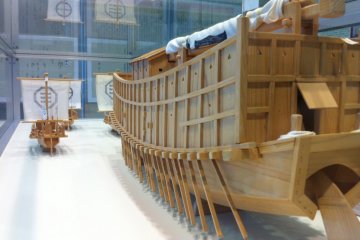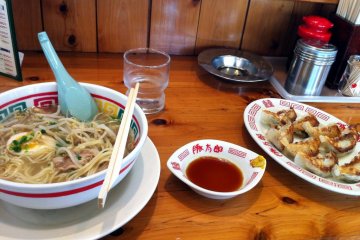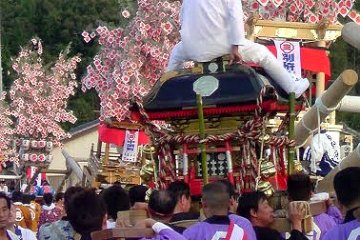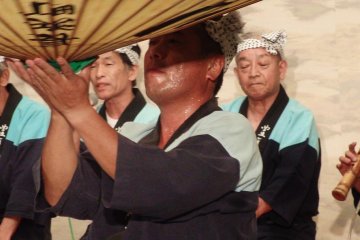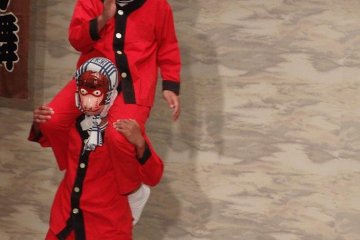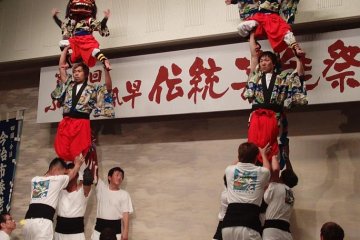During the Kamakura and Muromachi periods (1192 - 1575), groups of seaborne militias called “Iyo-suigun” appeared and came to dominate the vital supply routes in the Inland Sea between the western provinces and Kyoto, then the capital of Japan. They accumulated authority for policing the trade routes, taxing the traders and Samurai warriors who tried to pass through the channels. These militias were based in Ehime, formerly known as Iyo, between Matsuyama and Imabari. Some of them were based in Hojo near Matsuyama, in an area called Kazahaya or ‘fast wind’, for the stiff breezes that blow onto the land from between islands in the Inland Sea.
These one-time pirates-become-coast guards developed their own culture, which was celebrated widely in the area until recently. Fearing that these vernacular arts may die out, a number of ‘preservation societies’ are working to keep them alive by holding performances at every opportunity. I went to the Furusato Kazahaya Traditional Arts Festival for an afternoon of these entertainments in a rather bland museum and exhibition building, the Hojo Hometown Pavilion. While the name ‘preservation society’ may sound academic and backward-looking, these people are nothing of the sort. They’re diverse groups of all ages from different backgrounds, extraordinarily vigorous people who have got together to sweat buckets under the lights as they sing, dance, and perform some eye-popping feats of acrobatics.
This year was only the third time the event has been held. The program included storytelling in regional dialect, a dragon dance, a tiger dance, a girl’s dance with fans mimicking a pine tree (yes, indeed!), monkey acrobatics by boys in masks, a very droll rice-growing dance, human pyramids with children being waved about in the air wearing huge lion masks, and bon odori with local song. There was also a bit of hip-hop dancing thrown in for some contemporary appeal. I was fully prepared to be bored during the storytelling, but I soon found myself chuckling about the fanciful interactions between animals who practice magic ineptly, and humans who drink too much.
In the evening, there’s a good fireworks display, the Kazahaya fireworks festival, in the local port area near the island of Kashima, with food stalls, cold beer and people in yukata and other traditional summer wear.
The Traditional Arts Festival is held on the last Saturday of July, from 1:30 pm in the Bunka no Mori Matsuyama-shi Hojo Furusato-Kan, located between JR Yanagihara Stn. and Iyo Hojo Stn. It’s about a 30 min walk from the station, or 5 min by taxi. If you intend to walk, make sure you have plenty of liquids because it will be hot.
This event might be discontinued.
Names in Japanese
- ふるさと風早伝統芸能祭 Dentō Geino Sai Traditional Arts Festival
- 北条ふるさと館 Hōjō Furusato-Kan Hojo Hometown Pavilion



